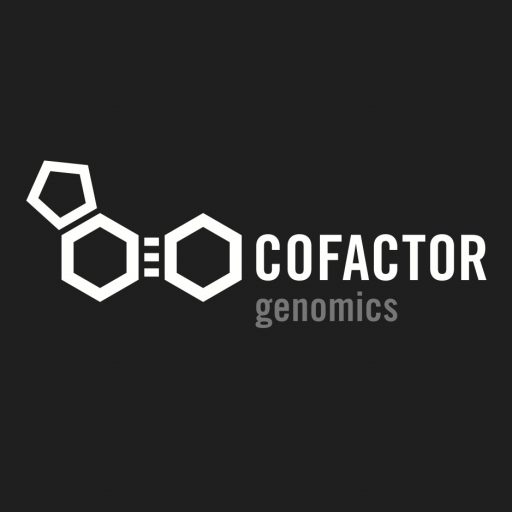Hello everyone
I'm doing transcriptome assembly work with Oases.
The illumina data's read length is 100nt and its quality is pretty good. I filterred bed reads, trimmed bases of low quality and trimmed adapters. Then did the Oases_pipeline in this command:
The final result in transcripts.fa seems not so good. The first locus "locus_1" has so many transcripts, which exceeds 600,000.
And I pick out a long sequence to do blastx ,nothing similar found. But when blastn, the sequence can match to my species' genome sequences(my species do not have a complete genome sequneced, the matched subjects are something like BAC library).
Is this normal?
I'm doing transcriptome assembly work with Oases.
The illumina data's read length is 100nt and its quality is pretty good. I filterred bed reads, trimmed bases of low quality and trimmed adapters. Then did the Oases_pipeline in this command:
Code:
nohup oases_pipeline.py -m 17 -M 71 -s 2 -g 27 -o Hg0912 -d " -short Hg-trim.fasta " &
>Locus_1_Transcript_1/656445_Confidence_0.000_Length_257
TTATTTTCTTCCTGTTGTTTTCAGTACGAGCCAGTTGAGATGCGCGTGAGTTTATAAACA
AAACCTGTGTCCCCGATTGGCCAGTAAGTAGCCGGCAACCGACACGGACGTTGTACTTGT
ATTGAGCAAAGTTTATTCCAAAAAAAAAAAAAAAAAAAAAAAAAAAAAAAAAAAAAAACA
TCCCGACGAATTGAGAACCTCTCCTTTTTGGGATAAAAAAAAAAAAAAAAAAAAAGTTGT
ATTTTGTGTTTCAAAGT
>Locus_1_Transcript_2/656445_Confidence_0.000_Length_505
CATTCCTTGTATTCAAAAAAAAAAAAAAAAAAAAAAAAATGAAACACGTCAACAAAAAAA
AAAAAAGGAACCCTTATTCTTAGAGAATTAAGACTTTTGCAAAAAAAAAAAAAAAAAAAA
AAAAAAAAAAAAACATCCCGACGAATTGAGAACCTCTCCTTTTTGGGATAAAAAAAAAAA
AAAAAAAAAAGCATGAAAAAAAAAAAATGCAGAAATCCCACTTTACTTTTAGATAAATAT
TGCAAATTTGCGATACATAACATACATTAATTACATATAGGTAACTGTTTATTTTAAGGC
AAATTCTTAGAAAAAACTAAGAAGTCCTGGATCAACTAAAAAATACAGCTCTCGAACGTC
GCTCTTACAATTTTAAAACCAAGTTCCTTGAGTTAAAAATTGGAAAAAGTCGCGCTCGCT
CCGCTCGCGATTTAGAAGCGATGTGCTTGTTTTTGCATTCGCCGGCCAACCAACAAAAAA
TTATGGACGTTTGAGCTACACTTAT
>Locus_1_Transcript_3/656445_Confidence_0.000_Length_407
TCAAAAAAAAAAAAAAAAAAAAAAAAATGAAACACGTCAACAAAAAAAAAAAAAGGAACC
CTTATTCTTAGAGAATTAAGACTTTTGCAAAAAAAAAAAAAAAAAAAAAAAAAAAAAAAC
ATCCCGACGAATTGAGAACCTCTCCTTTTTGGGATAAAAAAAAAAAAAAAAAAAAAGCAC
GTCAACAAAAAAAAAAAAAGGAACCACATTGAATTTTGTGTTACGTCACTACTTTTAGGC
......
TTATTTTCTTCCTGTTGTTTTCAGTACGAGCCAGTTGAGATGCGCGTGAGTTTATAAACA
AAACCTGTGTCCCCGATTGGCCAGTAAGTAGCCGGCAACCGACACGGACGTTGTACTTGT
ATTGAGCAAAGTTTATTCCAAAAAAAAAAAAAAAAAAAAAAAAAAAAAAAAAAAAAAACA
TCCCGACGAATTGAGAACCTCTCCTTTTTGGGATAAAAAAAAAAAAAAAAAAAAAGTTGT
ATTTTGTGTTTCAAAGT
>Locus_1_Transcript_2/656445_Confidence_0.000_Length_505
CATTCCTTGTATTCAAAAAAAAAAAAAAAAAAAAAAAAATGAAACACGTCAACAAAAAAA
AAAAAAGGAACCCTTATTCTTAGAGAATTAAGACTTTTGCAAAAAAAAAAAAAAAAAAAA
AAAAAAAAAAAAACATCCCGACGAATTGAGAACCTCTCCTTTTTGGGATAAAAAAAAAAA
AAAAAAAAAAGCATGAAAAAAAAAAAATGCAGAAATCCCACTTTACTTTTAGATAAATAT
TGCAAATTTGCGATACATAACATACATTAATTACATATAGGTAACTGTTTATTTTAAGGC
AAATTCTTAGAAAAAACTAAGAAGTCCTGGATCAACTAAAAAATACAGCTCTCGAACGTC
GCTCTTACAATTTTAAAACCAAGTTCCTTGAGTTAAAAATTGGAAAAAGTCGCGCTCGCT
CCGCTCGCGATTTAGAAGCGATGTGCTTGTTTTTGCATTCGCCGGCCAACCAACAAAAAA
TTATGGACGTTTGAGCTACACTTAT
>Locus_1_Transcript_3/656445_Confidence_0.000_Length_407
TCAAAAAAAAAAAAAAAAAAAAAAAAATGAAACACGTCAACAAAAAAAAAAAAAGGAACC
CTTATTCTTAGAGAATTAAGACTTTTGCAAAAAAAAAAAAAAAAAAAAAAAAAAAAAAAC
ATCCCGACGAATTGAGAACCTCTCCTTTTTGGGATAAAAAAAAAAAAAAAAAAAAAGCAC
GTCAACAAAAAAAAAAAAAGGAACCACATTGAATTTTGTGTTACGTCACTACTTTTAGGC
......
Is this normal?

Comment